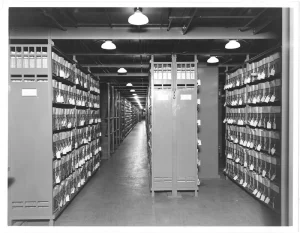Japan Approves Controversial Plan to Release Radioactive Wastewater into Ocean

April 30, 2021
On March 11th, 2011, Tohoku Earthquake and Tsunami struck the Daini Nuclear Powerplant located in Fukushima, Japan. The failure of the reactor cooling system caused by the earthquake and tsunami resulted in three nuclear meltdowns, which was followed by three hydrogen explosions and the release of nuclear contaminants. Among the many severe problems caused by the Fukushima incident, the nuclear contaminated water was considered to be one of the most perplexing, if not unsolvable, problems that the Japanese government had to deal with. For the past decade, the financial costs and technical difficulties of removing the nuclear elements and preventing the flow of nuclear contaminated water have continuously tempted the Japanese government to release them to the ocean. And on April 12th, Japan finally reached a decision. It approved the controversial plan of releasing 1.23 million metric tons of radioactively contaminated wastewater to the ocean.
Although Japan stated that the discharge of the contaminated water would not pose a threat to human health, neighboring countries remain unconvinced that the release of the radioactive wastewater is harmless. Japan’s decision was immediately condemned by its surrounding neighbors: Korea, Taiwan, Russia, and China. Every time the Japanese government posed the prospect of releasing the contaminated water into the ocean, South Korea continuously expressed deep concerns. According to Business Standard, the Korean government expressed “strong regret” over Japan’s “unilateral decision” to release the contaminated water without prior negotiations. It has also demanded its officials to explore means of petitioning in the international court Japan’s decision to discharge the radioactively contaminated water. Recently, more than 30 Korean college students even shaved their heads in front of the Japanese embassy in Seoul to protest Japan’s decision. Taiwan’s government and its environmental organizations also stated that they had “strong concerns” over the decision. Likewise, as reported in Business Insider, Russia expressed “serious concerns” over Japan’s plan and called on the “government of Japan to demonstrate due transparency,” while China criticized it by claiming that it is “extremely irresponsible.” According to Reuters, unlike Japan’s neighbors, however, the United States responded positively over the decision to release the contaminated water, claiming that Japan “adopted an approach in accordance with globally accepted nuclear safety standards,” and that they have “been transparent about its decision.”
There is also rising criticism within Japan over the government’s controversial and potentially harmful decision. Greenpeace Japan’s polling has shown that the majority of the residents of Fukushima oppose the controversial discharge of radioactive wastewater. In particular, fishermen and civic groups in Japan strongly opposed the government’s decision to release radioactively contaminated water, since both in Japan and its closest neighbor Korea, the public fear of being exposed to radiation has resulted in a significant decrease in sales of local seafood produced in Fukushima and Japan. The local fishermen in Fukushima are growing increasingly concerned that such measures would exacerbate the already difficult situation of the fishing industry throughout the country. Greenpeace Japan, an organization that “stresses the need to maintain a balance between human progress and environmental conservation,” issued a statement on April 13th, saying, Japan’s decision to discharge the contaminated water “ignores human rights and international maritime law.” Kazue Suzuki, Climate/Energy Campaigner at Greenpeace Japan claimed that “the Cabinet’s decision failed to protect the environment and neglected the large-scale opposition and concerns of the local Fukushima residents, as well as the neighboring citizens around Japan”, thereby once again failing the “people of Fukushima.”
Despite being opposed by both domestic and international criticisms, it seems that Japan is going to stick to its decisions due to the lack of alternative options. Until now, Japan has been storing the nuclear-contaminated water in more than one thousand steel tanks located in Fukushima, but even that is running out. Also, it did attempt to purify the contaminated water through scientific methods. The attempts have been partially successful in removing radioactive elements such as Cesium-137 and Strontium-90, but it has failed to separate Tritium from water due to the limitations of technology. Maintaining the tanks has cost Japan a non-negligible amount of money for the past decade, and increasing the number of tanks would require further expenses along with additional land to store those newly-built tanks. Until further advances in nuclear physics and chemistry technology are made, financially efficient and eco-friendly treatments of the contaminated water are unlikely to happen.
















































































































































